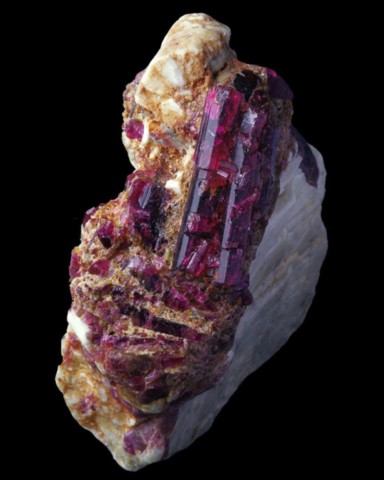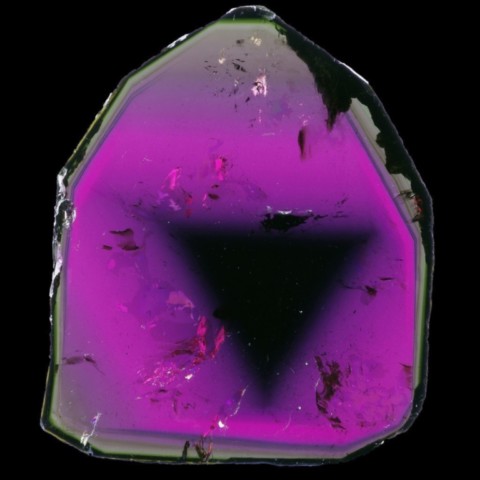RUBELLITE
Class : Silicates
Subclass : Cyclosilicates
Crystal system : Trigonal
Chemistry : Na(Al,Li)3Al6(BO3)3Si6O18(OH)4
Rarity : Uncommon
The term rubellite refers to a pink to red variety of elbaite, a sodium and lithium tourmaline that forms a series with dravite, magnesian. Its color is due to the presence of Mn3+ ions in the octahedral sites (and not to the presence of lithium as is frequently believed). Rubellite is a tourmaline specific to sodium and lithium pegmatites (sodolithic pegmatites) where it coexists with lepidolite, sometimes beryl and topaz. Its name comes from the Greek rubeus (reddish) in reference to its color. Like the majority of minerals in the tourmaline group, rubellite is almost always well crystallized. The crystals are usually elongated prisms, strongly striated along the elongation, with a triangular section with curved edges and pyramidal terminations. The fracture is uneven and the crystals, often broken, are cemented by later minerals (especially quartz). The crystals are commonly associated in parallel or radiate groupings. Rubellite is a valued stone in jewelry.
Main photo : Rubellite from Mount Ibity, Madagascar
Rubellite in the World
Twinning
No twinning known for this mineral species.
Fakes and treatments
No fakes listed for this mineral species.
Hardness : 7.5
Density : 2.9 to 3.1
Fracture : Irregular to conchoidal
Streak : White
TP : Translucent to transparent
RI : 1.615 to 1.651
Birefringence : 0.018 to 0.021
Optical character : Uniaxial -
Pleochroism : Visible
Fluorescence : None
Solubility : Hydrofluoric acids
Magnetism : ParamagneticRadioactivity : None





